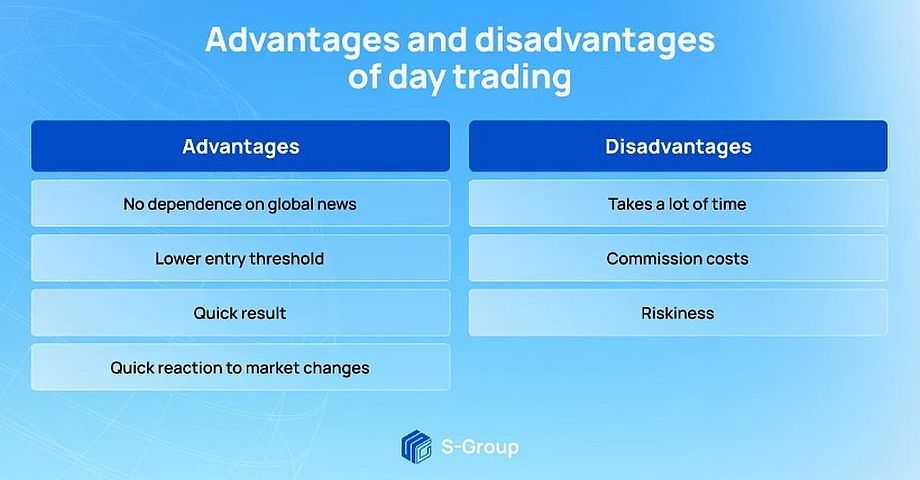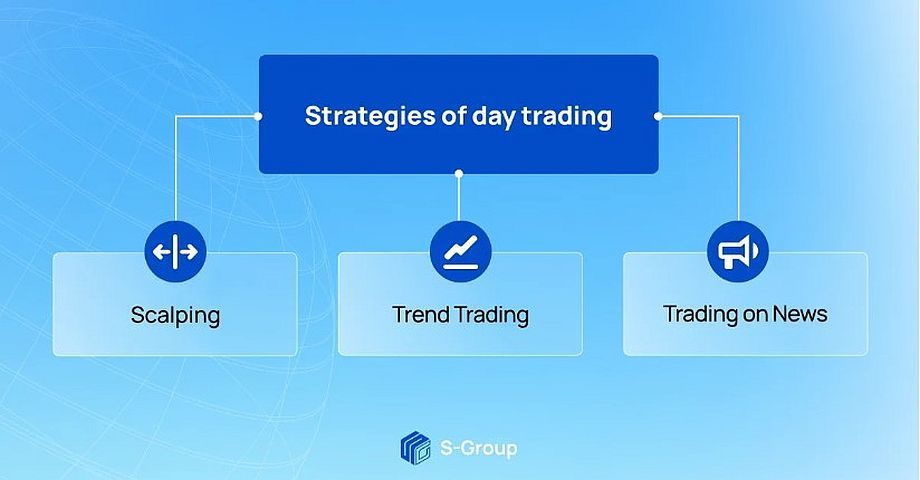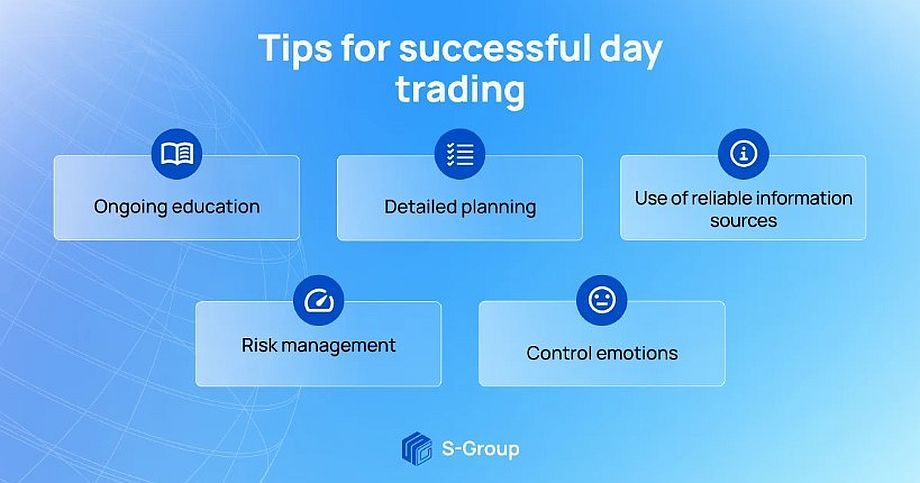Day trading strategy
Trading on the foreign exchange market involves the use of a large number of different strategies. It can be as holding assets in the account in the long term, as well as more complex strategies. One such strategy is day trading.
Our new article explains what day trading is, discloses its advantages and disadvantages, and shares the recommendations for successful day trading.
Day trading: the definition and the gist of it
Day trading is a strategy, which means opening and closing of deals within one trading day. That is, regardless of the result of the transaction, it must be closed at the end of the day.
For example, if you open a new position at 10:00 and close it at 14:00 of the same day, you have completed a day trade. If you closed the same position the next morning, it would no longer count as a day trade.
Intraday trading is characterized by quick reactions to market movements, news, and political events. The emergence of important news and its correct interpretation helps the trader to make a successful transaction against the background of information and to profit in the short term. It is very important to conduct a detailed technical analysis and to bet on quantity and speed in order to finish the deal with profit and not loss.
Assets for intraday trading have high liquidity and volatility, which allow you to earn income by capitalizing on rate differences.
Despite the simplicity of defining a strategy, intraday trading is not suitable for novice traders who have not had time to learn the details of the financial markets. Many beginners trade intuitively and make hasty trades without detailed analysis and tracking rate changes.
It is important to remember that day trading requires from a trader such qualities as stress resistance, concentration, ability to make a decision at a quick pace. Besides, a trader must have excellent skills of risk management, technical analysis, development of profitable strategy.
Advantages and disadvantages of intraday trading
Every trading strategy supposes presence of positive and negative sides for a trader. That is why it is very important to understand the pros and risks you will face during trading when choosing a strategy.
Let’s start with the pros of intraday trading.
+ No dependence on global news. Intraday trading is more influenced by situational news on a small scale than by global news.
+ Smaller entry threshold. The intraday trader does not need a big amount of money to start trading and get the desirable income. You can even start with $100 on the balance.
+ Quick result. The trader sees the result of his work and income at the end of the trading session.
+ Quick reaction to market changes. Intraday trading implies constant tracking of new events, allowing traders to be the first to react to news and open profitable deals.
Cons of intraday trading.
– It takes a lot of time. Traders need to spend a lot of time in front of the computer and studying the market to open successful deals and earn income.
– Commission costs. Commissions to a broker for intraday trades add up to a decent amount of money. In some situations, the commission may be half of the profit for the day.
– Riskiness. This kind of trading is unpredictable. Many traders lose their whole capital in the first year. Only their small number can achieve stable results within a certain period of time. That is why it is very important to study and get new knowledge constantly in order to eliminate these risks and learn how to manage them.
Strategies for intraday trading
There are three most common strategies for intraday trading: scalping, trading on trends and news. Let us consider them in detail.
Scalping
An effective strategy that is based on slices of several price points in different directions. The essence of such trading is to make a lot of short-term deals during the day, which will as the result give the desired percentage of profitability. That is, a trader buys an asset and sells it as soon as it rises by several points. The strategy allows earning quickly, but the sums are small. The trader determines the entry point on the basis of data from technical analysis.
Trend Trading
The charts of price changes clearly show the directions of upward or downward movement in the value of assets. The task of intraday trading is to track trends by opening trades when the trend starts and closing when the trend ends. To trade trends successfully, it is important to follow the charts closely and constantly monitor the situation, as the trend could go in the other direction.
Trading on the News
In intraday trading, assets react to news in the global economy. For example, a stock may fall 15-20% in a day because of important news that appeared during a trading session. For such trading to be successful, it is very important for a trader to constantly monitor and track the news as well as its impact on the financial markets.
Recommendations for day traders
We’ve prepared a list of recommendations worth keeping in mind before you start day trading.
- Constant learning. Learn new strategies as well as detailed training in fundamental and technical analysis of the market. Besides, it is significant to learn about other traders’ experience, their mistakes and learn from them.
- Detailed planning. Before you open a trade, it is very important to think about how you will close it, how you will take profit and what strategy you will follow. You must have a clear plan, which spells out the different options for events.
- Using reliable sources of information. You should not believe the forecasts of absolutely all analysts or online resources. Give preference to proven sources with a good reputation and extensive experience. Such projects have a large team of editors, who promptly post information on the site. There is a minimum risk of getting fake news, which can lead to unfortunate consequences.
- Don’t forget about risk management. If you allocate most of your capital to transactions, there is a great risk of quickly losing money. That’s why it’s better to invest 1-3% of your capital in a deal, so that in case of losses they will be less tangible.
- Management of emotions. In the case of losses, it is important to keep a cold mind and not to give in to emotions. It is also not recommended to keep a profitable trade open for too long in the hope of making additional profits. In this case, there is a risk that the trend will go in the opposite direction and the trader will lose money.
Conclusion: is intraday trading profitable
The answer to whether intraday trading is profitable or not depends on the investor’s goals, trading style and risk appetite. Intraday trading is a great option for those who prefer short-term investing and income without much investment. But it is important to remember that intraday trading requires a strong technical knowledge of the market, monitoring of the situation and news, and constant learning.



